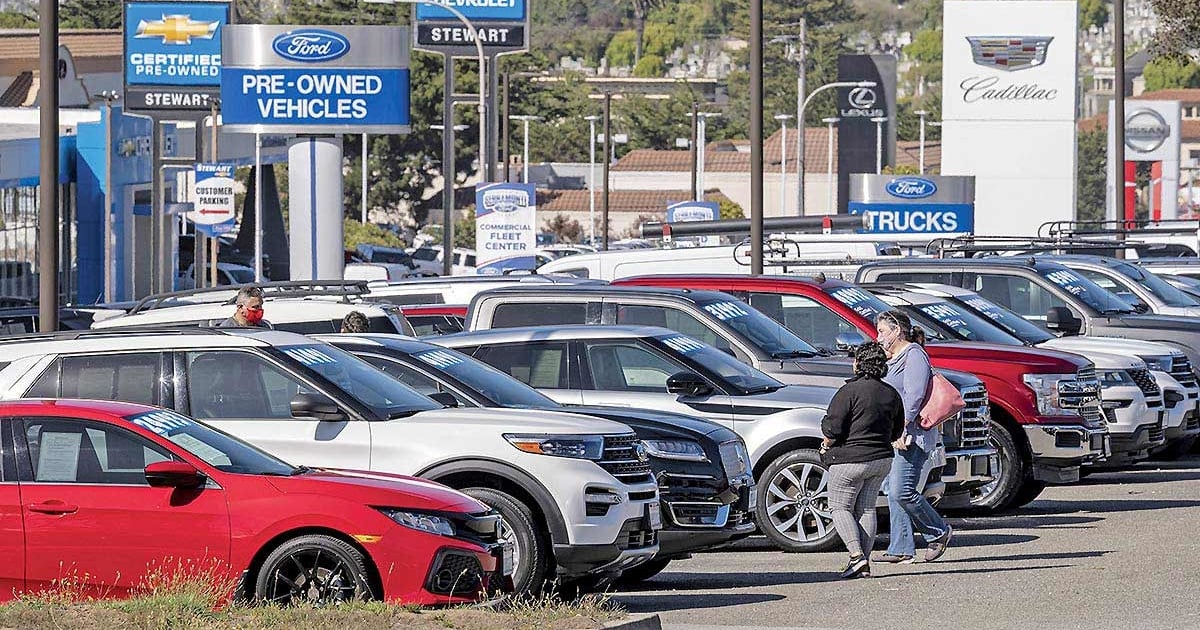
New vehicle inventory might never return to pre-COVID levels, according to Cloud Theory.
Both inventory and sales initially plummeted when the pandemic began in March 2020, but while sales recovered rapidly and even surpassed pre-pandemic levels in the ensuing months, inventory continued to droop, falling below 1 million by fall 2021.
Inventory has climbed back toward 2 million in the last quarter of 2022 and the first quarter of 2023, but Rick Wainschel, Cloud Theory’s head of data science and analytics, does not expect the industry to get back to the pre-COVID inventory levels of 3 to 3.5 million
“I don’t think it’s going to go back to that level any time soon, if ever,” Wainschel said.
Parts procurement remains difficult for some manufacturers, but there is more to the story; many manufacturers realized during the pandemic that they did not need as much inventory as they had previously operated with and that it was sometimes more profitable to be tighter on supply, according to Wainschel.
Cloud Theory is a software company based in Grand Rapids, Mich., that aims to provide comprehensive, updated efficiency data to help manufacturers decide on marketing and inventory distribution.
The pandemic pushed automakers to question their dependence on just-in-time supply chains.
“The just-in-time process was vulnerable. A crucial part in short supply can bring production to a grinding halt,” Wainschel said.
Automakers’ dependence on just-in-time delivery of crucial parts, especially microchips, left hundreds of thousands of cars sitting on auxiliary lots instead of making their way to dealers’ lots.
In hopes of avoiding similar problems, manufacturers are now adding a side of just-in-case to their just-in-time processes, Wainschel said. Manufacturers seeking to secure supply chains are pursuing opportunities to produce crucial parts in-house or through exclusive partnerships.
Meanwhile, the pandemic drove some dealerships to lean into preselling — an innovation Wainschel expects will continue.
At the end of 2022, 28 percent of inventory visible to consumers was in transit. In-transit vehicles have fallen to 23 percent of visible inventory in 2023, but Wainschel does not expect to see that fall to zero.
“I think with a new normal [inventory] level in the 2 to 2.5 million range there’s a place for in-transit inventory to be signaled to consumers that it’s on its way. I think that’s an innovation or approach that dealers took that will perpetuate over time,” Wainschel said.
As supply chains began to slowly mend in 2022, automakers poured the limited parts they had available into high-content, high-priced vehicles. High-end trims accounted for about 56 percent of inventory at the end of 2022, compared with 40 percent in 2021 and 17 percent in 2020.
“That’s a business decision to be made and a financial decision to be made but there are consumer-oriented repercussions to that, and I think that that’s where there are still lessons to be learned,” Wainschel said. “As they get more parts flowing in, [automakers] are looking to balance out their trim mix toward the middle and lower end of production to better meet the needs of consumers and not price them out of the market.”
Imbalanced trim mixes have put upward pressure on the average price of inventory, which has risen steadily since September 2022. The average marketed price of vehicles in April 2023 was more than $50,000 for the first time ever, according to Wainschel.
Meanwhile, the average turn rate slumped in the last quarter of 2022 and has remained below 60 percent in 2023, compared with more than 80 percent in the beginning of 2022.
“Part of that is a reflection of inventory going back up, but part of that is people being priced out of the market,” Wainschel said.
Wainschel expects to eventually see a new normal in which inventory hovers around 2 to 2.5 million, the trim mix begins to balance out and the turn rate is closer to 40 or 50 percent.